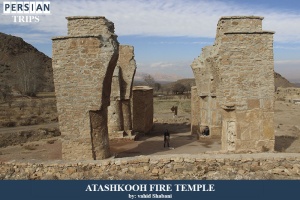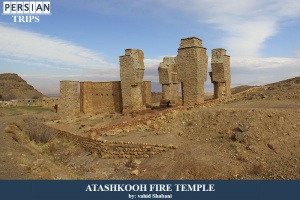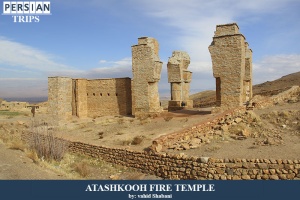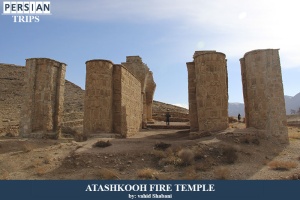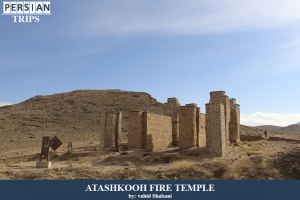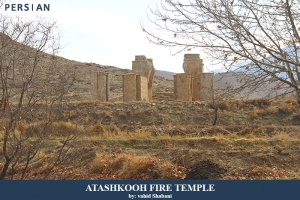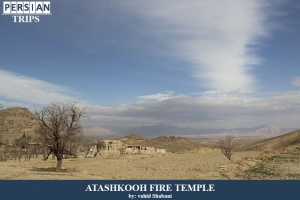Atashkooh Fire Temple
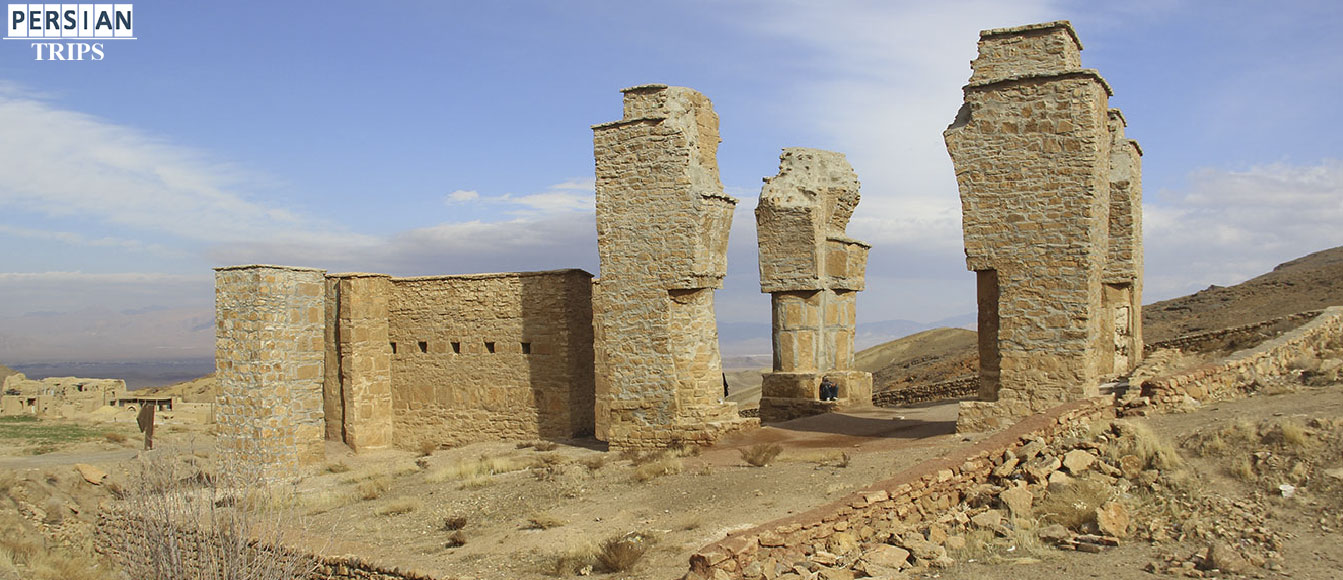
The remains of Atashkooh fire temple in Markazi province is undoubtedly one of the most important remnants of antiquity in the ancient land of Iran. This ancient structure was built in five kilometers of Nimour road,
near the village and the foothills of Atashkooh mountain and next to the river of the same name, in an area of about 600 square meters. The length of the building is 28.40 meters and its width is 12.60 in the eastern part and 25 meters in the western part. Atashkooh Fire Temple was one of the largest chahartaqi ( quadrangles) in Iran during the Sassanid era. The grandeur of this building is such that it is definitely one of the best Zoroastrian fire temples in the world. As Ibn Faqih Hamedani considers the construction of this fire temple to be in line with Kasra Porch, Qasr-e Shirin and Anahita Kangavar Temple. Historians consider the fire temple to belong to the Sassanid period and believe that according to the evidence, it was intact until the fourth century AH. This work was registered in 1938 as the national works of Iran.
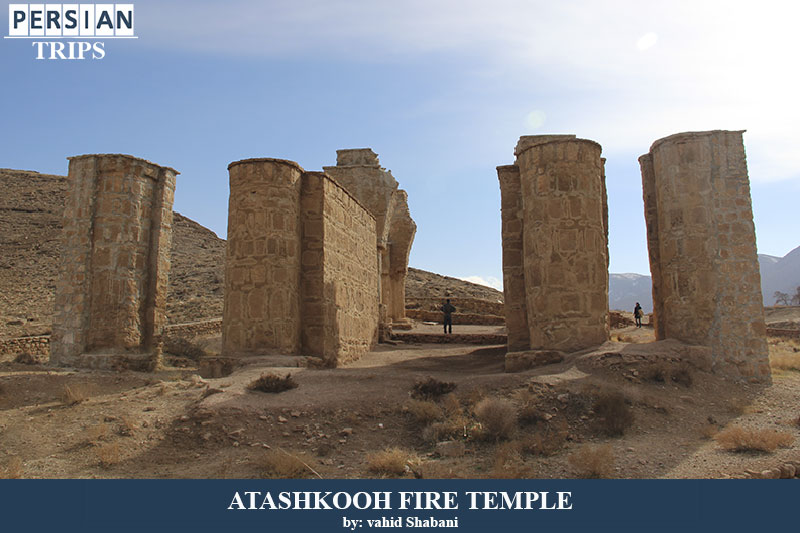
Architectural features of Atashkooh fire temple
This complex consists of three parts: the main hall (east), the west hall and the corridor. Materials used in the construction of the building are stone, brick, plaster, thatch, and lime. The wooden beams used in Atashkooh fire temple have functioned as an internal coil and a strengthening and dividing factor of pressure force. The base of each of the columns of this stone building is square and the body of the building is made of stone, and gypsum is used as mortar. At the top of each column, an integrated slate stone has been installed that supported the base of the arch. There is no short wall between the columns with the title of threshold, and for this reason, the four sides of the Chahat Taqi are open and non-closed. Also, there are no traces of arches and domes belonging to the four-arched space. Hakim Mohammad Taghi Khan in his book "Ganj-e-Danesh" says about the construction of the fire temple. He wrote that: "It is said that Jaseb is one of the buildings of one of Asgariyeh kings, the daughter of Bahman Ibn Esfandiar, known as Nimvar, and this king ruled in Naraq, Delijan and villages behind Godar. A fire temple was built on two foothills in the mountain known as Atashkooh mountain and it was built in four rows and its foundations are still standing and wide and long stones have been used in it, each piece of stone of which is one and a half width wide. In addition, it is three cubits long, and twelve thick knots in each piece of stone. When it is destroyed, four of those stones are installed on top of each other and next to the fire temple, there is a spring from which water is cultivated. It has good air and pleasant pasture, which now belongs to several Bakhtiari families ".
